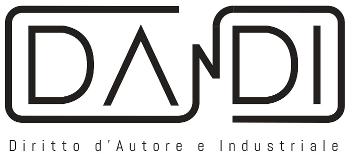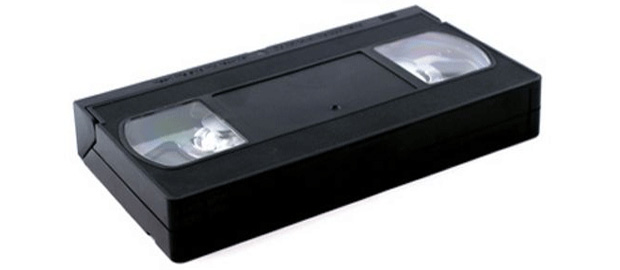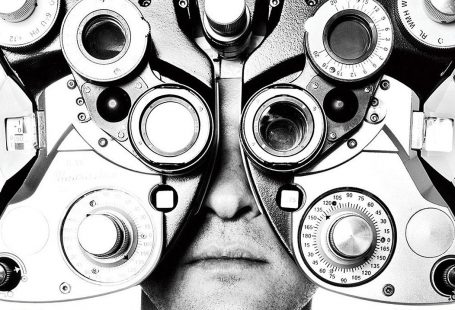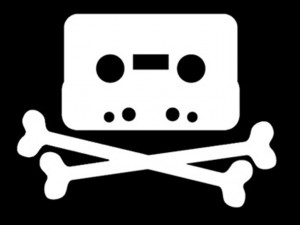Sony Doctrine Secondary liability Peer-to-peer file distribution phenomenon. Courts and technology
The peer-to-peer file distribution phenomenon has started with the introduction of Napster, but the legal starting point that is still a fundamental legal decision and main rule in the area of copying and copyright is the Sony decision, often referred to as the Betamax case.
The Sony decision has played a substantial role in the legal dispute over P2p services like Napster and its progeny, such as Aimster, Grokster, Morpheus and Kazaa.
It was the first concerted legal response of the American film industry to the home video revolution and after this decision the entertainment industry aimed on one side to set a precedent to use against other technology companies (P2p and otherwise);[1] on the other side the Courts have struggled to apply Sony doctrine to solve the question of whether companies who operate P2p networks are liable for the massive amounts of infringement that take place on them.
In fact for the last twenty years the Supreme Court’s decision in Sony Corp. of America, Inc. v. Universal City Studios, Inc. has guided lower courts’ analysis of the potential liability of the technology providers whose products may be used to infringe copyrights.
It’s undoubted that Law, Courts and Justice related to files sharing, P2p and copyright in general, appear divided between the need to protect new technologies and the need to provide remedies against copyright infringements and illegal downloads.
The application of Sony rule to digital technologies, however, has been less than straightforward.
The exam of it proceeds from several premises “… first, copyright promotes an important public interest in authorship and creativity together with granting authors exclusive rights as an incentive to create and disseminate new works of authorship. Second, there is nothing in the copyright law — or elsewhere, for that matter — that automatically subordinates that public interest to the important public interest in technological progress. Third, it is unjust to build a business on the infringement of other people’s copyrights.” [2]
Sony involved the question of whether a manufacturer of a Videocassette Recorder (VCR) could be held liable under the doctrines of secondary liability for the infringing actions of the customers who buy the VCR.[3]
The legal case arises many questions concerning the concept of secondary liability.[4] Secondary liability is an accepted and established rule in copyright law, but the Court in Sony concluded that this doctrine had not been applied to a situation presented by the VCR, where the manufacturer did not have actual knowledge of the infringing activity for which customers used the device, but only “constructive knowledge of the fact that its customers may use that equipment to make unauthorized copies of copyrighted material.”
To solve the case, the Court looked to patent law, specifically the “staple article of commerce” doctrine, embodied in Section 271(c) of the Patent Act, which provides that sale of a “staple article or commodity of commerce suitable for substantial non infringing use” is not contributory infringement, on the grounds that patent rights should not extend the patentee’s control to allow it to control the sale of staple articles or commodities. [5]
Applying this concept to the copyright context, the Court explained that: “…[t]he staple article of commerce doctrine must strike a balance between a copyright holder’s legitimate demand for effective – not merely symbolic – protection of the statutory monopoly, and the rights of others to engage freely in substantially unrelated areas of commerce.”
Based on this reasoning, the Court adopted the following approach to address the question of whether Sony could be held liable for copyright infringement. The sale of copying equipment, like the sale of other articles of commerce, does not constitute contributory infringement if the product is widely used for legitimate, unobjectionable purposes. Indeed, it need merely be capable of substantial noninfringing uses.[6]
To conclude, in Sony, the Court held that the manufacture and sale of the Betamax videotape recorder did not subject Sony to liability for contributory copyright infringement resulting from infringing uses by purchasers of the device, because the Betamax VTR was capable of “substantial non infringing uses.”
The Sony decision provoked a dichotomy between people who support the decision and people who are against it and after the decision it stimulated the discussion about the need of changing the Sony’s rule.[7]
Fans of the Sony decision insist that the legal rule announced in the case made the world safe for innovation.[8] The Sony standard is “the only thing that protects your right to own a VCR, tape recorder, CD-burner, DVD-burner, iPod, or TiVo. It’s that important.”[9]
Sony’s detractors read the decision more narrowly.[10] If consumers have some “right” to own or use a VCR, tape-recorder, CD-burner, DVD-burner, iPod, or TiVo, that right certainly doesn’t emanate from Sony, which recognized a limited consumer privilege to make temporary analog tapes of free broadcast television programs, and declined to hold the maker of a copying machine liable where the machine was used primarily to make those temporary tapes.[11]
The Court avoided comments on the debated definition of the substantial “noninfringement uses”, affirmed the Sony doctrine without modifying it, and characterized the new inducement theory as a classic case of common law secondary liability.[12]
For decades, Courts have recognized that those who assist and facilitate copyright infringement are liable just as those who actually commit the acts of infringement.[13]
Sony Doctrine secondary liability
Sony doctrine says the opposite and for that reason, just to fix the problem of file sharing and illegal downloads, Courts have contrived the doctrine of secondary liability, but another time all the area and the regulation of the issue is multiform and really confused and complicated.
After Sony decision Courts try to solve the problem of file sharing recognizing that one individual can be accountable for the actions of another[14] and differentiated three different kind of liability.
Thus under copyright law, this indirect, or “secondary” liability can take three distinct forms:
- inducement,
- contributory infringement and
- vicarious liability.
The Inducement Liability is described in MGM v. Grokster (June 2005) in this way:”… [O]ne who distributes a device with the object of promoting its use to infringe copyright, as shown by clear expression or other affirmative steps taken to foster infringement, is liable for the resulting acts of infringement by third parties.”
That recent decision regarding the legality of distributing P2p file sharing software with In re Aimster Copyright Litigation, reached sharply different outcomes and thus left open the questions of the correct legal standard to apply in assessing secondary liability or indirect infringement[15] for copyright infringement over the Internet. In the case of Grokster and Morpheus, a district court found that secondary liability did not apply to those P2p services,[17] in large part because of the Sony decision.[16]
In the case of Napster and Aimster, the Courts have held the operators of those services liable under theories of secondary liability. In the Napster case, the music industry plaintiffs admitted that Napster did not, itself, make or distribute any of their copyrighted works. Instead, they pressed contributory infringement and vicarious liability theories.[18]
Contributory Infringement is when one who knowingly contributes to another’s infringement may be held accountable. Or, as the courts have put it, “…one who, with knowledge of the infringing activity, induces, causes, or materially contributes to the infringing conduct of another, may be held liable as a contributory infringer.”
Vicarious Liability is imposed in virtually all areas of the law, and the concept of contributory infringement is merely a species of the broader problem of identifying the circumstances in which it is just to hold one individual accountable for the actions of another. Thus, vicarious liability requires two elements:
- the right and ability to supervise or control the infringing activity; and
- a direct financial benefit from that activity.
It is closely related to the doctrines of enterprise liability.
This approach and doctrine of secondary liability is not true and it is not applicable in the countries regulated by civil law. In Italy, for example, Courts don’t recognize any secondary liability and normally rule that those who assist and facilitate copyright infringement are liable just as those who actually commit the acts of infringement. There is any room for the concept of secondary liability.[19]
Different Courts’ approaches in fighting file sharing make the match between legal and illegal downloads much more difficult because there is not a common rule and the Internet, which is a global medium, is eventually unregulated and out of control.
Notes
[1] MBC, The Museum of Broadcast Communications, available at http://www.museum.tv/eotvsection.php?entrycode=betamaxcase [2] Feder J. M., Is Betamax Obsolete?:SONY Corp. of America V. Universal City Studios, Inc. in the Age of Napster. [3] Testimony of The Honorable Marybeth Peters Register of Copyrights and Associate Librarian for Copyright Services United States Copyright Office July 22, 2004. [4] Contributory infringement, vicarious liability and the controversy surrounding peer-to-peer services revolve around the central legal issue of secondary liability for copyright infringement. [5] See http://supreme.justia.com/us/365/336/case.html. [6] The Court noted, however, that it might be appropriate to take a “fresh look” at these issues in new copyright legislation. Statement of Marybeth Peters, The Register of Copyrights before the Committee on the Judiciary, United States Senate, 108th Congress, 2d Session, July 22, 2004, Intentional Inducement of Copyright Infringements Act of 2004, available at http://www.copyright.gov/docs/regstat072204.html [7] See is Betamax Obsolete?: Sony Corp. of America v. Universal City Studios, Inc. the Age of Napster, by Jesse M. Feder [8] Protecting Innovation and Art While Preventing Piracy, Hearing Before the Senate Comm. on the Judiciary, 108th Cong. (July 22, 2004) (testimony of Gary Shapiro, Consumer Electronics Association) (“We have long referred to this holding as the Magna Carta for our industry.”). [9] Sony, they claim, has for twenty years shielded innovators from copyright infringement suits and enabled the rapid technological advances that permit us to enjoy an unparalleled wealth of media. [10] The Sony Paradox, by Litman J.pag.918; see e.g., Brief for Appellants at 40-48, A & M v. Napster, 239 F.3d 1004 (9th Cir. 2001); Reply Comments of the Recording Industry Association of America, In the Matter of Digital Audio Broadcasting Systems and Their Impact on Terrestial Audio Broadcast Services, MM Docket No. 99-325 (filed August 2, 2004); Electronic Frontier Foundation, Endangered Gizmos; Theodore D. Frank, Letter to Marlene H. Dortch, Federal Communications Commission, In the Matter of Digital Audio Broadcasting Systems and Their Impact on Terrestial Audio Broadcast Services (February 7, 2004), at 2 (“the Sony decision only authorized certain recording for time shifting”); see also 2004 Senate Hearing, (testimony of Kevin McGuiness, NetCoaltion.) [11] See Jane C. Ginsburg, Copyright and Control Over New Technologies of Dissemination, 101 COLUM. L. REV. 1613, 1624, & n. 45 (2001); Trotter Hardy, Property (and Copyright) in Cyberspace, 1996 U. CHI. LEGAL F. 217, 250. [12] Excerpt from Article: THE FACT AND FICTION OE GROKSTER AND SONY: USING FACTUAL COMPARISONS TO UNCOVER THE LEGAL RULE [13] Tiffany A. Parcher, The Fact and Fiction of Grokster and Sony: Using factual comparison to uncover the legal rule. [14] So, for example, if a swap meet owner rents space to a vendor with the knowledge that the vendor sells counterfeit CDs, the swap meet owner can be held liable for infringement alongside the vendor. [15] arises when a party materially contributes to, facilitates, induces or is otherwise responsible for directly infringing acts carried out by another party. The US has statutorily codified secondary liability rules for trademarks and patents; however, for matters relating to copyright, this has solely been a product of case law developments. In other words, courts – rather than Congress – have been the primary developers of theories and policies concerning secondary liability. [16] A user who downloads and installs either software possesses the protocol to send requests for files directly to the computers of others using software compatible with FastTrack or Gnutella. The request goes to a computer given an indexing capacity by the software and designated a supernode, or to some other computer with comparable power and capacity to collect temporary indexes of the files available on the computers of users connected to it. The supernode (or indexing computer) searches its own index and may communicate the search request to other supernodes. If the file is found, the supernode discloses its location to the computer requesting it, and the requesting user can download the file directly from the computer located. The copied file is placed in a designated sharing folder on the requesting user’s computer, where it is available for other users to download in turn, along with any other file in that folder. [17] Discovery in the US case of MGM Studios Inc. v. Grokster, Ltd reveal the working of two types of the 2nd generation P2p applications namely, Grokster, which runs on the ‘FastTrack’ technology; and Morpheus, which runs a similar technology known as the ‘Gnutella’ technology. Grokster was distributed by Grokster Ltd, while Morpheus, relies on what is known as Gnutella technology, was distributed by StreamCast Networks Inc. According to Justice Souter: Grokster’s eponymous software employs what is known as FastTrack technology, a protocol developed by others and licensed to Grokster. StreamCast distributes a very similar product except that its software, called Morpheus, relies on what is known as Gnutella technology. [18] Discoveries in that case indicate that Napster developed and distributed a type of software known as MusicShare.. This software operated a p2p protocol that made MP3 music files stored on individual computer hard drives available for copying by other Napster users; it facilitated the search for such files; and enabled the transfer of exact copies of MP3 files from one computer to another via the Internet. [19] See Rome Court, 26 May 2009, in Fapav v. Telecom ItaliaDandi Law Firm provides legal assistance in Copyright. Check out our Services or contact Us!






